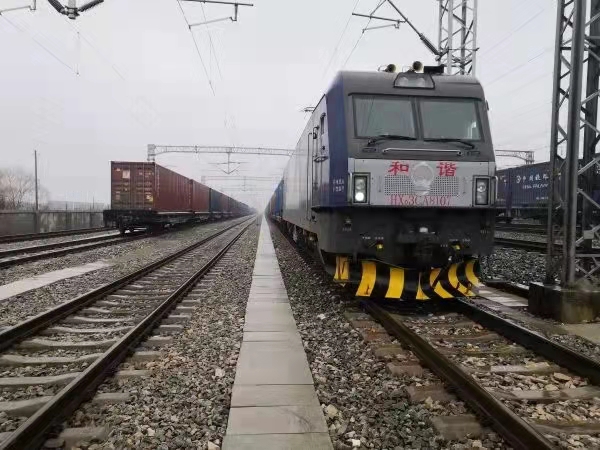According to relevant media reports, the carrier of the overseas broad gauge section of China EU trains departing from Alataw Pass and Khorgos revealed that in 2023, the proportion of west bound and east bound trains operated by UTLC in 2023 will be 100:47.3 (based on TEU volume), that is, the proportion of departure and return trips will be 100:47.3, while the proportion will continue to decline to 100:18 in January and February 2024, that is to say, the China EU trains departing from Alataw Pass and Khorgos will run 100 TEUs on the journey, and only 18 TEUs on the journey back. The business volume includes Europe, Belarus and Russia.
In view of the serious imbalance in the proportion of inbound and outbound trips, UTLC announced that since April, the freight for the wide gauge section from Alataw Pass and Khorgos to Europe has increased by $200/40ft containers, and the freight for the direction of Belarus' Gekino has increased significantly by $550/40ft containers due to the slow unloading at the destination station.
Why does the imbalance of the return journey lead to an increase in overseas shipping costs?
To answer this question, the first step is to clarify that overseas freight is actually composed of several parts, including:
The basic services purchased by Rail Tariff are the provision of locomotives and drivers by the passing national railways, providing traction services for trains within their territory, and paying for the use of the two railway rails themselves;
The use of wagons for railway vehicles, i.e. the use of wagons;
Use of Container fee;
OTHC at the originating station, including miscellaneous fees such as SMGS or Issue Railway Documents for Railway Transportation, Provision of Wagons, Shunting, and Arrangement of Block Train;
Customs Transit fees for train transit.
The uneven volume of travel on the return journey directly leads to poor turnover of vehicle boards.
Unlike domestic railways in China, railways in countries such as Russia, Kazakhstan, and Europe have already achieved network separation. This means that the main railway lines, the vast majority of stations, and locomotives belong to the national railway, while railway terminals and railway vehicles (train cars, train wagons) can belong to private companies.
As a vehicle panel operator, when there is a lack of matching return goods on a certain route, the vehicle panel will have to be transferred to other routes to undertake goods in other directions, rather than returning along the original route. For example, after a train from Alashankou to Brest arrives, if Brest does not have any goods returning to Alashankou, the carriage will take over the goods sent to Moscow or other directions instead of returning empty to Alashankou.
There are two main reasons why empty trains cannot be returned: first, the train board company needs to pay a higher railway tariff to the national railways along the way. Secondly, when an empty train returns, it generally does not receive a departure command from the originating station.
For container trains, the freight charges for wide gauge railways are tiered for different types of trains, with rates ranging from low to high: heavy container trains, empty container trains, and empty train boards without containers.

In recent years, due to the increase in operating volume, the capacity of wide gauge railways has become increasingly tight, so empty trains are almost never given departure orders because precious traction locomotives and lines cannot be wasted.
For example, since the end of 2023 to the first quarter of 2024, with the development of the situation between Russia and Ukraine, the transportation capacity of the Siberian section of the Russian Railway Company has been prioritized for the transportation of military supplies, coal and other materials. The transportation capacity of eastbound container trains from Russia to China has been significantly weakened, and the planned departure of eastbound container trains in March 2024 alone has decreased by 50%.
In order to further improve traction efficiency, Russian Railways also requires all eastbound container trains to depart in long formations (38 80 foot flatbed cars), which further affects trains bound for Erenhot Port through Mongolia. Due to infrastructure restrictions within Mongolia, Russian long haul trains can only be reorganized and reduced in length after entering Mongolia (31 80 foot flatbed cars). Mongolian Railways charges additional railway transit fees for the scattered parts, further increasing the cost of outbound trains from Erenhot.
Starting from March 2024, the freight cost of a 40 foot railway container departing from the Erenhot Port towards Russia has increased by $100 to $150 compared to February.
From this, it can be seen that an imbalance in the volume of inbound and outbound traffic can lead to poor turnover of overseas vehicle boards, and problems in the turnover of overseas vehicle boards will form a transmission effect, ultimately leading to port congestion and an increase in overseas freight costs.


China Trade Express Logistics (ShenZhen) Co., Ltd 粤ICP备20062912号